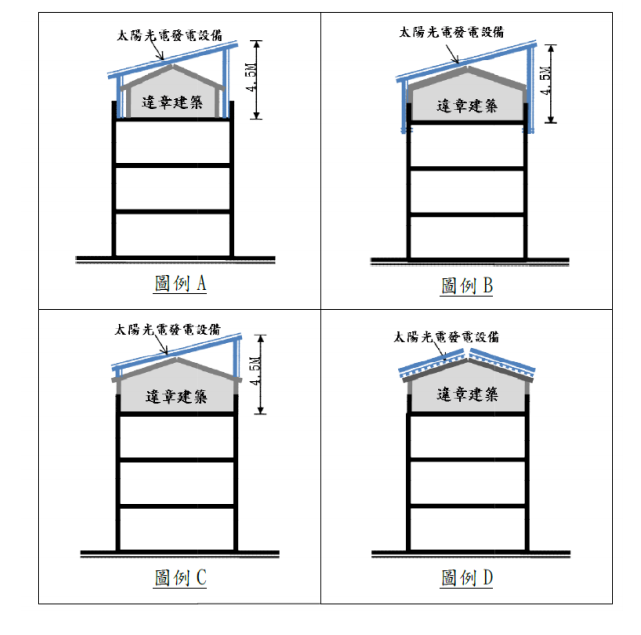
Tainan City Leads Other Trial Locations in Taiwan’s Rooftop Solar Program
Taiwan’s government in 2017 initiated “Green Energy on Every Roof” to promote and subsidize the installation of rooftop photovoltaic (PV) systems across the island. Taichung, Yunlin, Chiayi, Tainan, and Pingtung are currently the five major municipalities and counties that have signed up for the program. In the latest development, the city of Tainan has announced that it is the first among these five trial locations to begin power generation with the subsidized rooftop systems. Since this July, the subsidized rooftop systems on the buildings in Tainan have one after the other completed their grid connection.
Along with “Green Energy on Every Roof,” Taiwan’s government is also easing restrictions on PV systems that are installed on illegal or unapproved building structures (such as roof coverings and an additional level on the top of a building). Tainan’s Annan District has many examples of PV systems on illegal structures, and the area is now designated as an experimental space to test different ways to integrate green energy generation into urban planning.
Taking into account that a vast number of residential apartment buildings on the island have unapproved rooftop coverings or additional levels, Taiwan’s government this year has implemented a policy that allows some unapproved building structures with existing rooftop PV systems to apply for subsidy under “Green Energy on Every Roof.” Furthermore, the successful application for the subsidy could “legalize” the previously illegal structure in some instances. The conditions of this scheme are as follow: the unapproved rooftop structure together with its PV system must not exceed 4.5 meters in height (two building levels); the unapproved structure will not serve as an emergency shelter area; and the unapproved structure cannot be a part of a whole building that is already in serious violation of the building or zoning code (thus being a target for immediate demolition).
The government has set up a consultation office to answer inquiries regarding the subsidy program and the policy for legalizing unapproved structures with PV systems.

Image: Ministry of Economic Affairs, R.O.C.
The above diagram shows four legally acceptable configurations of rooftop PV systems installed on unapproved building structure. The “structurally separate configurations” are represented by Example A and B in the diagram. “Separate” here means that the unapproved structure does not serve as the supporting foundation of the PV system. Example C represents the “structurally integrated configuration,” where the mounting of the PV system is supported by the walls that also prop up the roof of the unapproved structure. Example D or the “panel equipment configuration” is basically solar panels laid directly on the unapproved roof coverings. To be eligible for the subsidy program, rooftop PV systems have to be installed according to these layouts and then reviewed and signed off by certified technicians.
To achieve the goal of phasing out nuclear power by 2025, Taiwan’s government is shifting public investments heavily towards green energy projects such as solar power plants and offshore wind farms. Taiwan’s Ministry of Economic Affairs (MOEA) has set the targets of installing 3 gigawatts of generation capacity from rooftop PV systems by 2020 and 17 gigawatts from ground-mounted PV power stations by 2025. Also, the government’s two-year solar plan is expected to add 1,520 megawatts of installed capacity by 2018.
As of now, 5,000 households mostly from the five aforementioned municipalities and counties have registered with the “Green Energy on Every Roof” program. To complete grid connection by September, the tendering processes for PV systems and installations must begin in the July-August period.
There are very few households from northern Taiwan that have signed up for the rooftop solar subsidy program. One possible reason is that northern Taiwan has fewer hours of sunshine per year on average compared with the central and southern regions of the island. The Bureau of Energy under MOEA also earlier stated that other cities and counties will likely join the program as the buildup of rooftop solar capacity in the five trial locations becomes visibly significant. The Bureau of Energy has already provided substantial amounts of subsidy to the five cities and counties. The first-phase expansion of the program will begin this August, with Changhua County reported to become the latest trial location. Kaohsiung City is also interested in joining a similar green energy initiative.
(The above article is an English translation of a Chinese article written by Daisy Chuang.)















